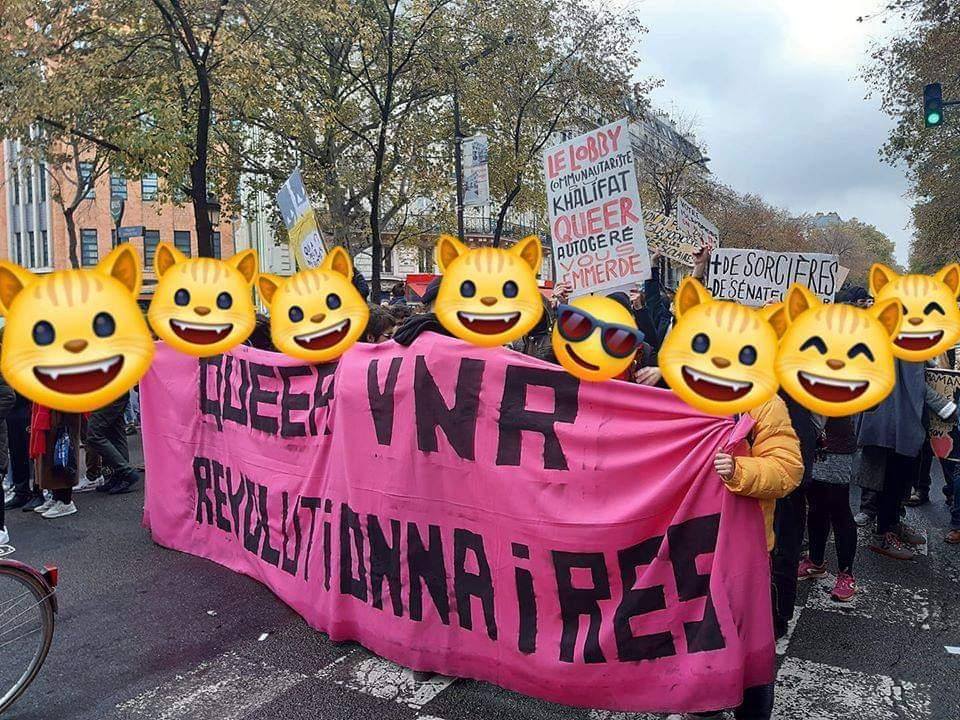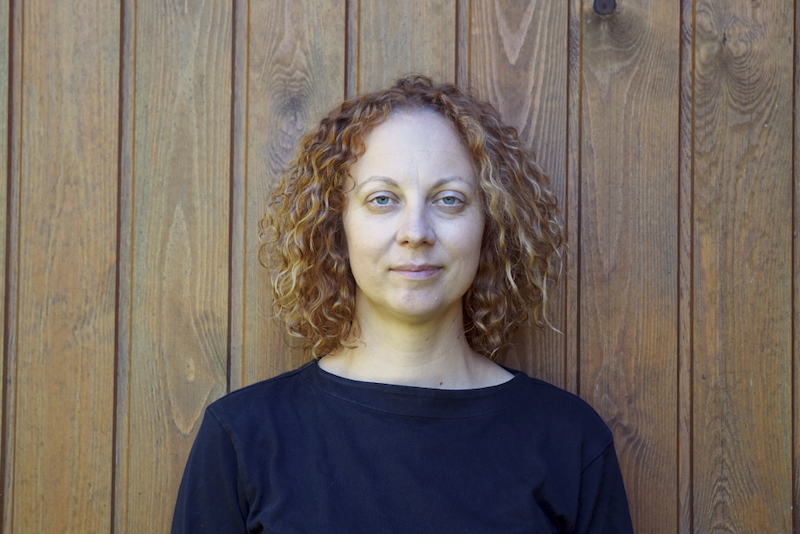Artists against capitalism. French strike against neoliberal government and the inequality of social welfare
Rebeka Põldsam interviews Paris based curator Barbara Sirieix about the mobilisation of art workers in the current strike against the retirement pensions reform in France. For several years, Barbara Sirieix has been part of feminist, queer and activist groups in France. She has curated exhibitions and programmes addressing inequalities in society and in the art world. Together with Joachim Hamou and Maija Rudovska she co-curated an exhibition Barbarian in Paris in 2018 and co-edited a catalogue Active Art (Paraguay Press, 2019) that discussed various approaches to art that challenge definitions of the political in art in relation to social movements. Her connection to Estonia started with an exhibition in 2018 where some works by Anna-Stina Treumund were exhibited and censored. Later Sirieix curated a solo show of Estonian sculptor Anu Põder (La Galerie, 2019). In this interview, Barbara Sirieix explains the context of the fight for the pension system carried in France from the perspective of artworkers : how artists became involved in this strike and what are the slogans and messages mediated at weekly demonstrations.
Since we started this interview in mid-February, the French government has passed the pension reform law in front of the assembly under the 49.3 decree on a Saturday when the assembly hall was almost empty. The political majority instrumentalizes the coronavirus crisis for its political agenda a few weeks before the municipal election. This is clearly an act of undemocratic governance as Barbara Sirieix added later. In addition, Roman Polanski was awarded César cinema prize despite numerous charges of child molestation. Virginie Despentes has published a letter commenting on the latest changes in France.
Barbara, you are part of Art on strike (art en grève) in Paris. What are you standing for and against? What are the roles of artists and the art world in this movement?
Art on strike (art en grève) was created on the eve of the first protest against the retirement pension reform of the current government, on December the 5th, 2019. La buse, a collective of art workers, invited other art collectives, e.g. La permanence, Décoloniser les arts, 343 racisé.es, Documentations, La part des femmes, l’Oeuvrière, Economie solidaire de l’art, Plein le dos, Wages for wages against, to come together in the protest in Paris under the same banner “art en grève“. The first call was very successful, it spread to many cities in France, where independent “art en grève” corteges have continued to organize local protests. And it’s ongoing as long as the government plays deaf, we will continue to struggle!

“Damn artists, politize!”
Historically the visual artists and art workers haven’t really been uniting or unionizing, because the individualist approach is prevalent in that sphere, a situation co-dependent legally with the absence of proper professional statuses. But we can observe an increasing politicization. In 2016, the El Khomri law, defined new regulations facilitating the extension of working hours and laying off for companies. It generated strikes, protests and sit-ins — many movements and collectives emerged in that context with new forms of political consciousness and engagement. There also emerged an escalation of riot control’s weaponization and consequently, an emergence of new forms of direct action like the black bloc came about, which is often used by the media of the opposition to stigmatize protesters and discredit their demands.
From this new collective energy awareness of labour laws has increased, particularly about the erosion of legal regulations for working conditions spreading in the culture field where the precariousness and lack of proper professional statuses for many workers is a real problem.
This is how the collective La buse emerged: from this assessment in the field of visual arts combined with the multiplication of abuse cases, e.g. unpaid work, illegal contracts, discriminations, moral and sexual harassment, rape. The other collectives at ‘art en grève’ have similar goals, e.g. La permanence comments specifically the performing arts field, and La part des femmes comments photography, Décoloniser les arts and 343 racisé.es denounces racism and calls for an increase in the representation of ethnic minorities in cultural institutions, L’Oeuvrière fight for better status of art installers, etc.
The current proposition of the retirement pensions reform is very problematic because it will make it even more difficult for art workers to get a retirement pension. Currently most art workers cumulate jobs with different professional statuses, have a constant lack of stability in their activity from one month to another or one year to another — it’s been acknowledged politically for some artworkers: in 1936 the “intermittent du spectacle” status was created in France for the workers of the entertainment industry, i.e. cinema, television, theatre, performing arts. These are already not the best conditions to cumulate trimesters for retirements. With the new reform, it would be calculated by points instead of trimesters, which is a data system that evaluates the performance of the worker. Basically it’s a change in the work ethics and in the role of welfare, as it is completely subjugated to the requirement to function like a capitalist enterprise. In the current system the amount of the pension is based on the best years of your work life. This means a different approach to the role work plays in society, the capacity to find a job, maintain its stability, etc. are considered part of the responsibilities of society (i.e. state) and not only of the individuals. It’s a logic that is spreading all over the world and it increases inequality despite showing world growth. Of course, there is growth if the rich are getting richer, never mind the poor, though! France has been historically in resistance to such structural inequality and has been attached to its social system with retirement, unemployment, social security, “intermittent” status, but the recent governments have been under the same neoliberal influences. So, we are trying to hold on!

“Art for promo”, “Power back to art”
What are the protests like? How are they prepared? How many people are involved? Who are protesting and who are not?
After each protest we do general meetings to prepare for the next protest; we vote on what we should do next, our alliances, our positions, our statements etc. Other collectives joined “art en grève” after the first protest Page Jaune, Art debout, CLAQ, Gilets jaunes intermittent·e·s chômeur·e·s précaires, Formes des luttes, La clef revival: many emerged after the El Khomri law protests and the Yellow vests protests last year. New collectives organized themselves too like Vacataires en lutte, Book bloc (Libraries on strike), the Opera and the Music Conservatory are also on strike, etc. We try to develop as many convergences as possible: ally with syndicats defending cultural workers and also support workers from other fields. For instance, helping transport workers on strike to block bus stations on early mornings or organizing and cooking dinners, concerts or parties to fundraise for the strikes . ‘Art en grève’ did several parties on Sundays at DOC space in the 19th arrondissement, in collaboration with local organisations, so it was part of the local life of the neighborhood, accessible to everyone to support the local metro line strikers.
We also have a strong alliance with CLAQ (Committee of Autonomous and Queer Liberation) and other queer collectives likePink Bloc and QueerVNR. They have been present in protests for several years, they engage in the front cortege – it’s the place in the protest ahead of thet syndicats, where most of the independent groups and collectives go – to propose an alternative to the masculinist Black bloc with pink, purple and glitter in banners and dress codes. They also create an amazing atmosphere with music, dance and fantastic slogans like: “Macron, macron, on t’encule pas, la sodomie c’est entre amies” (Macron, macron, we won’t fuck you in the ass, sodomy is among friends only) “Plus de caresses, pas de CRS” (more caresses, no cops), “Plus de PD, moins de LBD” (More faggots, fewer flash balls), “On est queer, vener et revolutionnaires” (We are queer, angry and revolutionary) “La retraite à 20 ans pour baiser il faut du temps” (Let’s retire at 20, it takes time to fuck).

“Dyke for a president”
There have been very violent repressions by the French police who use tear gas, smoke grenades, block the streets with high fences to discourage people from proceeding with the demonstration marches. The apparatus of the task forces, their attitude (overworked therefore nervous, aggressive and condescending) generates a lot of frustration and anger so people get easily fidgety. And then they have the right to use resources which are actually non-lethal war weapons. Since the 2016 protests, it’s been getting worse and worse. So we decided to be very careful not to endanger our group as many people who have gathered with us are often new comers in protests, so we dissolve the group whenever there is trouble, the collective also organizes training sessions to help manage anxieties in protests.
One of the posters is Anna-Stina Treumund’s Origin of a possible orgasm, an homage to Courbet’s l’Origine du Monde. Treumund’s piece was quietly censored at Fondation Ricard in 2018 for its explicitness. What is now the message that the protesters carry with the poster? What other slogans and hashtags are presented at the protests? What do they mean and what do they refer to?
In terms of logistics, everything is possible because art en grève has a place in DOC, where we can gather for our meetings, to prepare our banners. It’s been very creative with the banners! For example: “Art en lutte” (art in struggle), “Unies contre les vampires” (united against vampires – referring to Buffy the vampire slayer), “Artistes 2 merde, politisez vous” (for fuck sake artists, politicize yourselves), “Art en promo” (Art in promo), many of them are puns and references to pop culture not so easy to translate in English! “LVMH : La Vraie Misère Hardcore” (LVMH which is Louis Vuitton group: the true hardcore misery), “Prochain vernissage le cocktail c’est molotov” (Next opening, the cocktail is molotov).
In art en grève, a group of lesbian art workers was created “art en gouine” (art on dyke) and performed an act during one of the protest by displaying two banners, one representing a work by Anna-Stina Treumund that was made almost impossible to access in a group exhibition because of its explicit content in 2018, and the other with the slogan ‘Une gouine pour présidente’ (A dyke for president, quoting Zoe Leonard’s famous text). A leaflet was also distributed explaining the context and the problem of invisibilization of lesbian artists.
Generally the feeling is that we need to protest! We need to make actions because the Macron government by ignoring the claims, responding with blunt contempt to the opposition, imposing brutal repression during protests starts is practicing undemocratic governance. There has been progress recently as the State council pointed out some flaws in the reform project, however, the government still wants to pass the law. Nevertheless, we have until June to maintain the opposition. The Ministry of Culture published an inquiry based on the situation of the artists and authors, where the alarming situation has been acknowledged. It’s a first step, very timid, and now we have to see what solutions will be proposed by the state.











